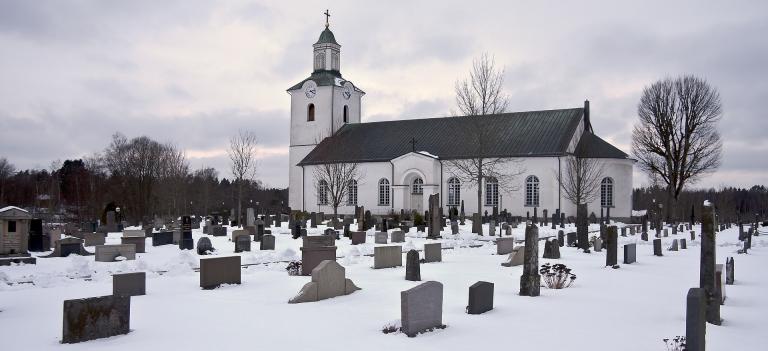 As my Methodist siblings approach their General Conference, many have been looking for a way to hold their denomination together, and not a few have agonized over the prospect that they are headed for schism. While it is hard to be definitive, there seems to be more evidence than not that Methodists are going to part company with one another.
As my Methodist siblings approach their General Conference, many have been looking for a way to hold their denomination together, and not a few have agonized over the prospect that they are headed for schism. While it is hard to be definitive, there seems to be more evidence than not that Methodists are going to part company with one another.
“Denial,” as they say, “is not just a river in Egypt.”
For one thing, as much as traditonalists and progressives differ with one another, they do agree on one thing and that is that they are done with one another. Traditionalist Rob Renfroe argues that the two factions should part company and Frank Schaefer, who was deprived of his ordination credentials for a time after officiating at his son’s wedding to another man, has declared, “’It’s better for our LGBTQ community if we split.’”
Experts in Methodist polity observe that the fatigue and frustration on both sides of the divide are at nearly intolerable levels and that if the General Conference does not make a decision, it will be made for them. That isn’t just a sentiment. Both sides are also making plans to go their own way, even as they board trains, planes and automobiles for St. Louis, Missouri.
Then there are the plans before the church itself. The “Traditionalist Plan” doubles down on the current rules or Discipline of the church, it promises to prosecute those who fail to abide by those rules, and plainly describes an exit plan for those who are willing to acknowledge that they don’t plan to conform to the dictates of Discipline. One could argue that this isn’t schism, but just the church getting clear about its commitments, but the effect is the same.
The Connectional Conference Plan reorganizes the entire church, abandoning its regional system of jurisdictional conferences and creates three virtual conferences instead: Progressive, Traditional and Unity – read, left, right and center. As hard as planners have argued that this is one of the plans which preserves denominational unity, the fact of the matter is that it is really in-house schism, with two groups pulling in opposite directions and one crying, “Can’t we just get along?” The plan promises that every four years the church can check in with one another to see if things have changed.
The One Church Plan also looks like organized schism. This plan, which is the one favored by a number of bishops and denominational leaders, would modify the language of the Discipline to foreclose on church trials, and then allow local congregations, clergy and annual conferences to each choose a side. If it prevails some would understandably argue that the plan preserves the unity of the denomination, but from another perspective the only form of unity that the plan safeguards is largely administrative and financial.
As someone who believes that the unity of the church is a theological value that is often neglected, I feel for my friends and colleagues who grieve the likely division that lies ahead. The bureaucratic and financial issues are of little long-term importance, and often the attachment that people have to the unity of the church is little more than a vague (if understandable) longing for the familiar. But the failure of the church to witness to the kind of community that exhibits the love and mercy of God has much larger significance. If the church cannot move forward in unity, one has to ask, what substantive difference does the church’s teaching make?
That said, I have reluctantly concluded that American Protestantism was made for schism. This is not the first time that Methodism has fractured. There are already multiple versions of Methodism in the United States thanks to the schismatic character of Protestantism. The Methodist Church has divided in the past, and the same predilection for division can be illustrated across denominations, including my own. The more important question is why that predilection is so common across American Protestantism. That is a question that deserves far more attention that I can give it here, but it is fairly safe to say that a handful of factors dominate.
One is the dynamic set in motion by both the European and English Reformations. The moment that Luther responded to his own excommunication by founding a new church and Henry VIII declared himself the head of the church in England, unity took a back seat to other considerations. Whether it was monarchical independence in Henry’s case or the longing for a church marked by purity and faithfulness in Luther’s case, the unity of the church was relegated to the fringes of Protestantism’s theology. Protestants were not the first to long for reformation and contrary to popular belief, Catholics had made constant efforts to reform the Roman church long before the rift with Luther. But once Protestant reformers broke with the church itself as a means of addressing other concerns, unity was always likely to be sacrificed to other considerations.
Another dynamic is the fusion of the democratic process and the life of the church. Crafted hip to hip with the American Revolution, Protestantism in the United States combined politics and faith from the beginning. Decision making bodies mimicked the country’s bicameral legislative structure, church proceedings were shaped by the parliamentary rules that governed other bodies, and national conferences (or conventions) became a common means of managing the church’s business.
More importantly of late the crafting of legislation and political maneuvering has become the way of navigating issues that were once addressed pastorally and on the local level. Gone is the pastoral space that was once considered necessary to address the struggles that the church faced individually and collectively. Now the reigning assumption is that both can and should be addressed legislatively. It is striking, then, but not really surprising that to one degree or another United Methodists are now willing to reorganize themselves into what are essentially center, right and left political coalitions.
Is American Protestantism made for schism, then? There is a good deal of evidence to suggest that it is. What it means to acknowledge that as a given, however, should give us all pause. After decades of ecumenical efforts, it now appears that we will part company across a growing number of issues and there is no reason to believe that United Methodism or any other American denomination has reached the end of the issues that may divide us.













